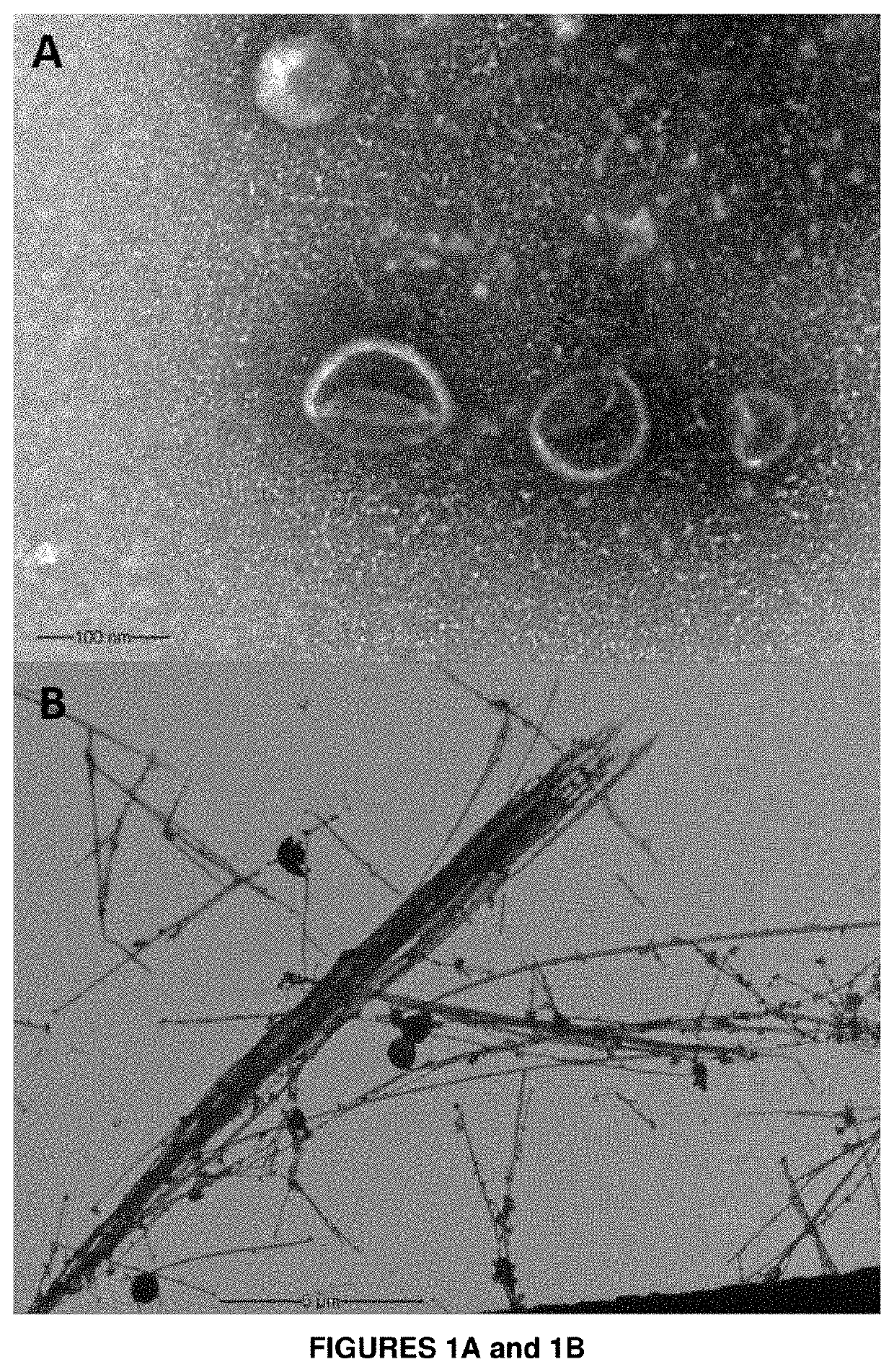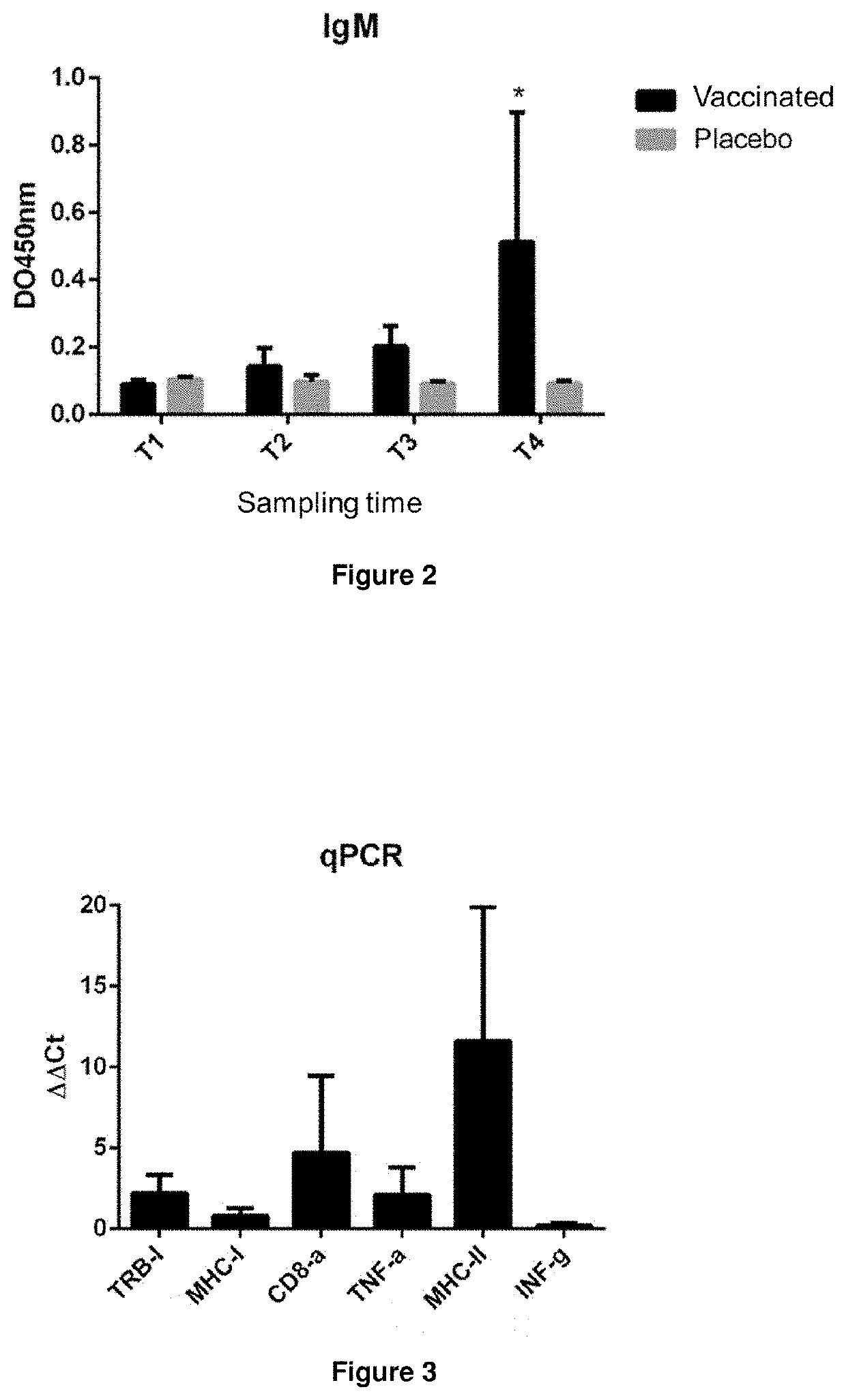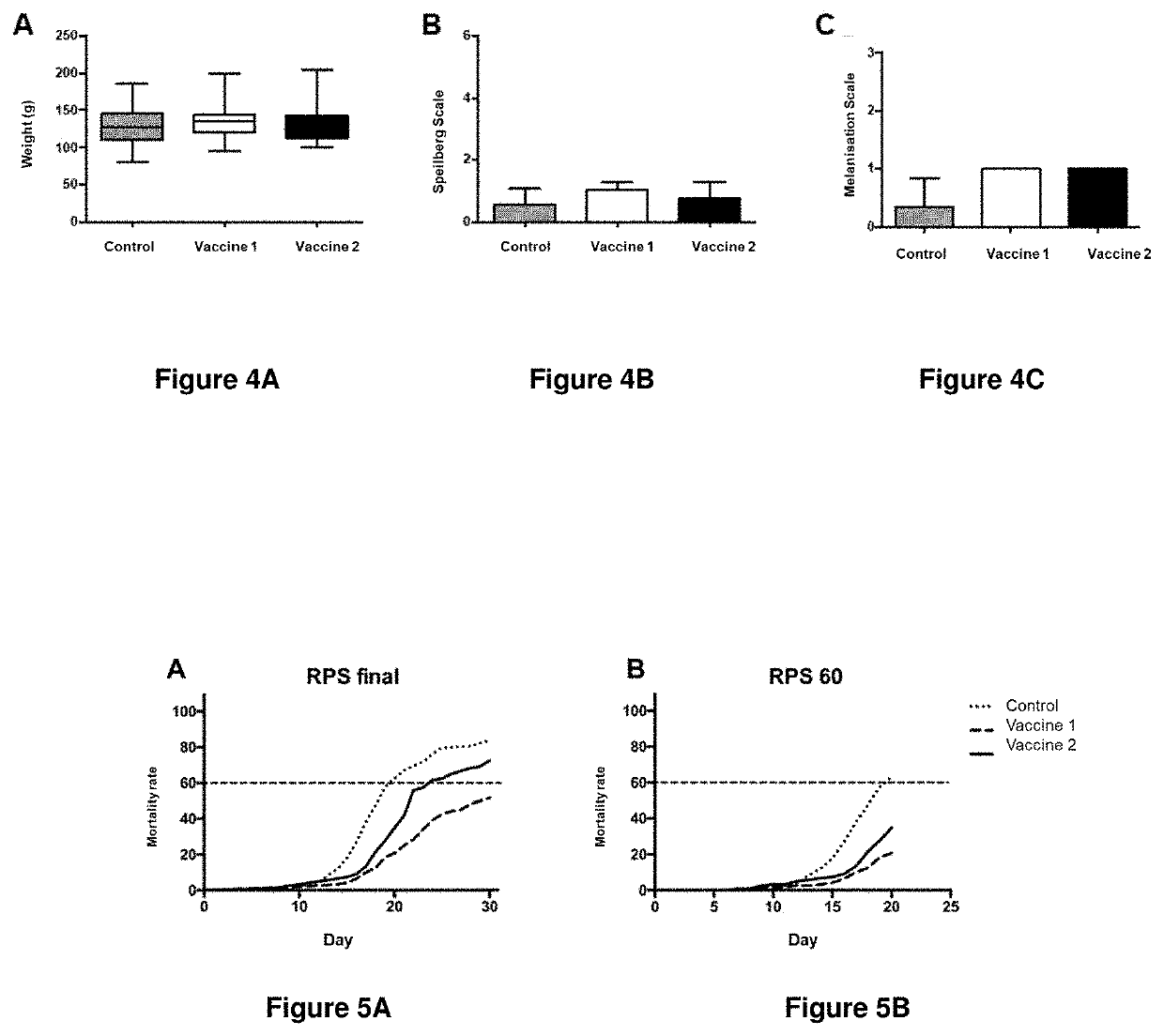Formulation of fish vaccine based on lipidic nanovesicles, in particular, a proteoliposome or cochleate, with activity against the salmonid rickettsial syndrome (SRS)
a technology of lipid nanovesicles and fish vaccines, which is applied in the field of aquaculture, can solve the problems of complex delivery and loss of immunity, and achieve the stimulation of cellular and humoral responses, and achieves rapid and economical development, high performance, and preserves the level of virulence
- Summary
- Abstract
- Description
- Claims
- Application Information
AI Technical Summary
Benefits of technology
Problems solved by technology
Method used
Image
Examples
example 1
on of Proteoliposomes, Bacterial Membranes and Cochleates
[0039]Growth of P. salmonis:
[0040]The strain of P. salmonis grew in flasks with agitation in a commercial liquid medium Grace's (Gibco), L-15 (Hyclone) or SFX-insect (Hyclone trademark).
[0041]The growth was made for 14 days, with a temperature of 18° C. and constant agitation. After the growing time, the bacteria were harvested by centrifugation, storing the sediment at −80° C.
[0042]Purification of Membranes and fragments of cell wall:
[0043]The purification of the membranes was made using the following stages:[0044]a) The frozen sediment of the microorganism was thawed.[0045]b) It was resuspended in 25 mL of sterile lysis buffer solution (Disodium Phosphate, Sodium Chloride; sterilised by filtration), 2 grams of pearls of Zirconia / Silica 0.1 mm (BioSpec®) were added for each gram of sediment obtained.[0046]c) Then it was frozen at −80° C.[0047]d) It was thawed by sonication at 400 W with Hielscher Ultrasonic Processor UP400S ...
example 2
[0086]Growth of Piscirickettsia salmonis Strain LF89
[0087]The strain of P. salmonis grew in flasks with agitation in a commercial liquid medium Grace's (Gibco), L-15 (Hyclone) or SFX-insect (Hyclone trademark).
[0088]The growth was made for 14 days, with a temperature of 18° C. and constant agitation. After the growing period, the bacteria were harvested by centrifugation, storing the sediment at −80° C.
[0089]Bacterial Harvest
[0090]Once the growing period was completed, bacteria were harvested by centrifugation at 3.500 g during 20 minutes at 4° C. The bacterial sediment obtained is stored at −80° C. until its use.
[0091]Purification of Membranes and Fragments of Cell Wall:
[0092]The purification of the membranes was made using the following steps:[0093]i) The frozen sediment of the microorganism was thawed.[0094]j) It was resuspended in 25 mL of sterile lysis buffer solution (Disodium Phosphate, Sodium Chloride; sterilised by filtration), 2 grams of pearls of Zirconia / Silica 0.1 mm (B...
example 3
tal Design and Samples
[0135]Rainbow trout (Oncorhynchus mykiss) clinically healthy and with an average weight of 40 g were maintained in a tank, with a recirculation system of fresh water and acclimatised in a controlled environment (Temperature 10 to 12° C., oxygen saturation 100-105%) during 2 weeks in 3 tanks with 400 fish each one (1000 L tanks with a density of 9 kg / m3). After the acclimatisation period, fish of every tank were vaccinated intraperitonially (0.1 mL): Tank 1: vaccine 1 as defined for FIG. 4, tank 2: vaccine 2 as defined for FIG. 4 and tank 3: control (saline solution), 300 thermal units (UTA) after the vaccination fish received a second dose.
[0136]300 UTA after the second dose 120 fish (40 per group) were transferred to common tanks of 720 L with a density of 27 kg / m3. This experimental design was also performed in triplicate.
[0137]All groups were challenged by intraperitoneal injection with 0.1 mL of Piscirickettsia salmonis (104 TCID50 / fish). The mortality was ...
PUM
| Property | Measurement | Unit |
|---|---|---|
| Temperature | aaaaa | aaaaa |
| Mass | aaaaa | aaaaa |
| Volume | aaaaa | aaaaa |
Abstract
Description
Claims
Application Information
 Login to View More
Login to View More - R&D Engineer
- R&D Manager
- IP Professional
- Industry Leading Data Capabilities
- Powerful AI technology
- Patent DNA Extraction
Browse by: Latest US Patents, China's latest patents, Technical Efficacy Thesaurus, Application Domain, Technology Topic, Popular Technical Reports.
© 2024 PatSnap. All rights reserved.Legal|Privacy policy|Modern Slavery Act Transparency Statement|Sitemap|About US| Contact US: help@patsnap.com










